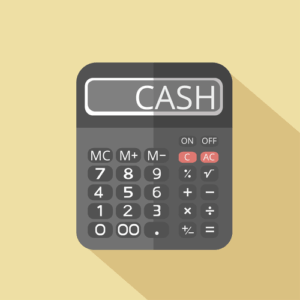
Liabilities are the amounts of money the company owes to others. Think of liabilities as obligations — the company has an obligation to make payments on loans or mortgages or they risk damage to their credit and business. Assets typically hold positive economic value and can be liquified (turned into cash) in the future. Some assets are less liquid than others, making them harder to convert to cash.

What is a Statement of Owner’s Equity

This can https://x.com/BooksTimeInc lead to inaccurate reporting of financial statements and incorrect decisions made by management regarding money and investment opportunities. Net worth is another term for equity and is the difference between the assets and liabilities. Furthermore we can get the formula for calculating net-worth by rearranging the accounting equation as follows. In the same fashion our examples section sets out typical double entry bookkeeping transactions and show how each transaction affects the accounting formula. At first glance, you probably don’t see a big difference from the basic accounting equation.
- While the basic accounting equation’s main goal is to show the financial position of the business.
- The fundamental accounting equation, also called the balance sheet equation, is the foundation for the double-entry bookkeeping system and the cornerstone of the entire accounting science.
- Along with Equity, they make up the other side of the Accounting Equation.
- The $30,000 came from its owner and $20,000 came from the borrowing from the bank.
- It specifically highlights the amount of ownership that the business owner(s) has.
The Expanded Accounting Equation
More specifically, it’s the amount left once assets are liquidated and liabilities get paid off. The assets of the business will increase by $12,000 as a result of acquiring the van (asset) but will also decrease by an equal amount due to the payment of cash (asset). We will now consider an example with various transactions within a business to see how each has a dual aspect and to demonstrate the cumulative effect on the accounting equation. On 12 January, Sam Enterprises pays $10,000 cash to its accounts payable. This transaction would reduce an asset (cash) and a liability (accounts payable). At this point, let’s consider another example and see how the basic accounting equation is: various transactions affect the amounts of the elements in the accounting equation.
- The Accounting Equation looks at what a company owns and compares it to what a company owes.
- On 28 January, merchandise costing $5,500 are destroyed by fire.
- Essentially, the representation equates all uses of capital (assets) to all sources of capital, where debt capital leads to liabilities and equity capital leads to shareholders’ equity.
- Of course, this lead to the chance of human error, which is detrimental to a company’s health, balance sheets, and investor ability.
- Let’s use a delivery van for a florist shop as an example to explain.
- The company also took out a $15,000 loan to pay for the delivery van.
How confident are you in your long term financial plan?
The accounting equation is a factor in almost every aspect of your business accounting. Additionally, it doesn’t completely prevent accounting errors from being made. Even when the balance sheet balances itself out, there is still https://www.bookstime.com/articles/gross-income a possibility of error that doesn’t involve the accounting equation.

Do you own a business?
The merchandise would decrease by $5,500 and owner’s equity would also decrease by the same amount. On 1 January 2016, Sam started a trading business called Sam Enterprises with an initial investment of $100,000. For every business, the sum of the rights to the properties is equal to the sum of properties owned. Think of retained earnings as savings, since it represents the total profits that have been saved and put aside (or “retained”) for future use. For example, imagine that a business’s Total Assets increased by $500. This change must be offset by a $500 increase in Total Liabilities or Total Equity.
To Ensure One Vote Per Person, Please Include the Following Info

The rights or claims to the properties are referred to as equities. Shaun Conrad is a Certified Public Accountant and CPA exam expert with a passion for teaching. After almost a decade of experience in public accounting, he created MyAccountingCourse.com to help people learn accounting & finance, pass the CPA exam, and start their career. Metro Corporation earned a total of $10,000 in service revenue from clients who will pay in 30 days. Metro issued a check to Office Lux for $300 previously purchased supplies on account. Accounts receivable list the amounts of money owed to the company by its customers for the sale of its products.
